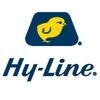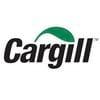I. INTRODUCTION
Alternative rearing systems are becoming increasingly important mainly because of growing public concerns about intensive systems. Regulations have been established in some countries to restrict or ban the use of conventional systems. The European Union banned the use of conventional battery cage systems in 2012 and alternatively, new enriched colony cages, free range production systems or barn systems have been introduced as substitutes (Leinonen et al., 2014). As a result, poultry farmers are shifting from conventional to alternative rearing systems like free range, barn and enriched colony cages (Thaxton et al., 2016). These systems provide the birds with an enriched environment designed to improve their behavior and wellbeing. Furthermore, excreta of free range birds can act as organic fertilizers, enhancing soil fertility and crop yield (Hilimire et al., 2012). Alternative rearing systems could be viable options for better returns to small poultry farmers, helping to break the cycle of poverty. In Pakistan, some changes in the rearing system of laying hens will probably be required to follow the international guidelines for animal welfare, but current literature is sketchy about the use of commercial layer strains in different rearing systems. Therefore, the present study was performed to evaluate the effects of different rearing systems (free range, semi-intensive and confinement) on production performance traits in two strains of commercial layer (Hyline W-36 white and Bovans white).
II. MATERIALS AND METHODS
a) Ethical approval and experimental design
The present study was conducted at the Layer Unit, Ravi Campus, University of Veterinary and Animal Sciences (UVAS), Lahore, for 14-week duration (19 to 32 weeks). In total, 150 pullets reared at the Layer Unit, comprising two commercial strains (Hy-line and Bovans), 75 from each, were randomly assigned to 6 treatment groups in a factorial arrangement of 2 (strain) × 3 (housing system) under a RCBD. Each treatment group was replicated 5 times with 5 hens per replicate. Experimental birds were reared and handled under the code and conduct of ethical committee approved by the University of Veterinary and Animal Sciences, Lahore, Pakistan.
b) Rearing systems and management
The experimental birds were maintained in a well-ventilated poultry house in pens on a deep litter floor. Each pen (5 × 5ft) represented a replicate. Feed was offered through manual feeders placed at the front of each pen. A free range area (15 × 30 m) was located adjacent to the house. A photoperiod of 16L:8D was applied during the entire study period. In the intensive system, an average daily temperature of 30°C and Relative Humidity (RH) of 75% were maintained throughout the experimental period. All birds were kept under similar management and hygienic conditions and vaccinated against ND and IB (ND on monthly basis and IB after two months in drinking water) under the supervision of a qualified veterinarian.
Birds in the intensive system were kept 24 h in house (pens) and offered 100% layer ration (0700 h) formulated in accordance with the recommendations of the NRC (1994). The diet was iso-nitrogenous (CP 15.04) and iso-caloric (2682 kcal/kg ME). The birds under the Semi Intensive (SI) housing system, had ‘half-day’ (07:00-12:00 h) access to free range and subsequently were kept in the house (pens) (12:00-07:00 h) with 50% of the daily feed allowance. A one week adjustment period was provided to the birds under the free range and semi-intensive rearing systems; they were acclimatized by directing them to the free range and then replacing them into the pens to avoid subsequent handling stress. The birds under the free range rearing system had ‘whole-day’ access to the free range area (07:00-0500 h) where seasonal vegetation, including legumes (beans, lentils, peas and grasses) and nonlegumes were grown. Subsequently, they were shepherded to the same house and kept in pens (05:00-07:00 h) with rice husks as bedding material. Fresh water was provided to the birds through a nipple drinking system. On the free range, birds were protected from predators by installing a wire-mesh enclosure (2.44 m high) surrounding the free range premises.
c) Parameters studied
Body weight (BW), egg production (EP), egg weight (EW), egg mass (EM) and livability (LB) [(dead birds/total birds × 100) -100] parameters were studied. Data collected included weekly body weight / bird, percent weekly egg production, fortnightly egg weight, fortnightly and cumulative egg mass, and livability percentage. Egg production was recorded on a hen/day basis. Egg production percentage was calculated as a ratio between total egg production and number of hens multiplied by 100. Egg weight was recorded by using a digital scale with 0.01-g precision, whereas egg mass was calculated as the total number of eggs multiplied by average egg weight. Throughout the study period, mortality if any, was recorded daily, to calculate the livability percentage.
d) Statistical Analysis
The data were analyzed through ANOVA technique under factorial arrangement by using the GLM procedure of SAS 9.1 for windows, Cary Inc. NY. Rearing system and strain were taken as the main effects and their interaction was also tested. Comparison among treatment means was done through Duncan’s multiple range (DMR) test) at 5% probability level. Each pen was taken as an experimental unit.
III. RESULTS AND DISCUSSION
a) Body weight (g)
Housing system had a pronounced effect (P ≤ 0.05) on final body weight, whereas strain alone did not influence (P > 0.05) final body weight. Birds under the intensive rearing system showed greater (P ≤ 0.05) body weight compared to those under the semi-intensive and free range rearing systems (Table 1). Higher body weight in the intensive rearing system may be attributed to the availability of a balanced diet and most importantly to the absence of natural behavior such as foraging, walking, which may result in reduced body weight. Conversely, it is reported that birds under free range rearing system have freedom for the expression of their natural behavior (Chen et al., 2013. Likewise, increased body weight was observed in broiler breeder, quails, cockerels and turkeys (Macek et al., 2004) under an intensive housing system as compared with those having access to the free range.
Table 1 - Production performance of commercial layer under different housing systems.
b) Egg production (%)
Housing system and strain of bird, separately and in interaction, showed a significantly impact (P ≤ 0.05) on egg production. Layers of the Hy-line strain had greater egg production than the Bovans strain. Layers under the intensive rearing system had higher egg production (P ≤ 0.05) compared to those under semi-intensive and free range (Table 1). The difference in egg production between the two strains may be attributed to the difference in their genetic make-up as discrepancy in egg production among different genetic groups of poultry (Rehman et al., 2017) has already been reported.
c) Egg weight and egg mass (g)
Egg weight was affected (P ≤ 0.05) by the treatments and their interaction. Layers under the intensive rearing system produced heavier eggs than those under free range. Hy-line strain layers produced eggs with higher weight than those of the Bovans strain. Interaction between housing system and strain of bird resulted in minimum egg weight in layers of the Bovans strain under the free range rearing system (Table 1). Egg weight is a genotype dependent parameter, which varies from breed to breed and strain to strain (El-Fiky et al., 2000). Similarly, variations in egg weight were observed among different strains and breeds of poultry (Yakubu et al., 2008). However, Wall et al. (2010) observed no effect of different poultry breeds or strains on egg weight.
d) Livability (%)
Neither strain, rearing systems, nor their interaction influenced (P > 0.05) livability (Table 1). A comparable value for livability percent in free range and intensive systems indicates that birds have genetic propensity to adjust well to free range conditions. However, disease, predation and injuries due to cannibalism are reported to be the major reasons behind low livability in free range rearing system (Elson, 2015). From the present findings, it can be concluded that housing of commercial layers in an intensive housing system had a positive effect on production traits.
ACKNOWLEDGEMENTS: The authors acknowledge the funding and support of the Department of Poultry Production, UVAS, Lahore, Pakistan.
Presented at the 29th Annual Australian Poultry Science Symposium 2018. For information on the latest and future editions, click here. 
















